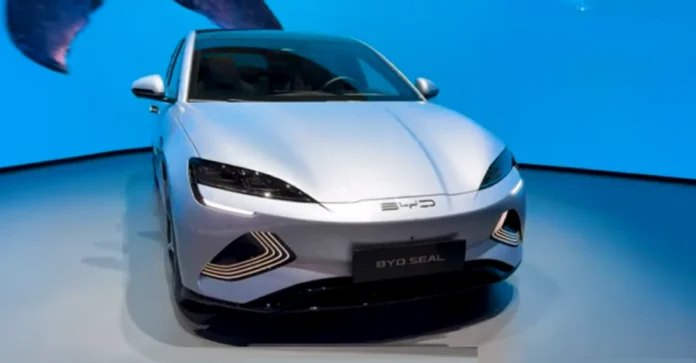After Mexico, the Chinese automaker BYD is preparing to make its debut in the Korean market, introducing its affordable electric vehicles and potentially disrupting the local EV market dominated by brands like Hyundai and Tesla.
The certification process for BYD’s EVs through the Korean Environment Ministry is expected to take two to three months, with the official debut potentially taking place as early as the third quarter of 2024. BYD’s arrival in Korea could pose a significant threat to local manufacturers, such as Hyundai and Tesla, as the company is known for producing affordable electric vehicles.
Given BYD’s success in Japan, where it outpaced Hyundai in EV sales, how might its entry into Korea impact local manufacturers and consumer choices? BYD has significantly outperformed Hyundai in the Japanese market since entering in 2022, selling 1,511 EVs compared to Hyundai’s 492 units last year. BYD’s success is attributed to its cheaper price tags, with the Atto 3 priced around $7,500 lower than Hyundai’s Ioniq 5 despite similar ranges. The Chinese automaker’s entry into Korea is expected to focus on selling low-cost, high-quality models like the Atto and the Dolphin. The difference in sales is also linked to BYD’s traditional dealership model versus Hyundai’s online approach
Local reports suggest that the BYD Dolphin Mini will be the first model to hit the Korean market, potentially followed by other models such as the Seal sedan, the Dolphin small SUV, and the Atto mid-size SUV, which BYD registered trademarks for in Korea last year.
According to Kim Pil-soo, an automotive technology professor at Daelim University College and chairperson of the Korea Electric Vehicle Association, BYD’s entry into the Korean market is seen as a strategic move to increase awareness before entering larger markets like the United States and Europe. BYD plans to use Korea as a test bed to refine its brand recognition and product offerings before expanding into more established markets.
BYD has dominated the eBus market by selling a total of 439 electric buses, making it the top Chinese brand in Korea. The company’s e-Bus 12 model can run for 503 kilometers per single charge, outperforming competitors like the Hyundai Elec City in terms of range and price.
The Atto 3, a major model for BYD with over 500,000 units sold globally, is anticipated to be introduced in Korea at a competitive price range compared to Hyundai’s offerings like the Ioniq 5.
Chinese electric vehicle (EV) manufacturer BYD is set to build its first European factory in Hungary, marking the company’s expansion into the European market. The construction of BYD’s new energy passenger vehicle factory in Szeged, Hungary is expected to be completed in phases, creating thousands of local jobs and boosting the local economy. The plant is anticipated to start production in the second half of 2025, with a full ramp-up expected in three to four years. The expected production capacity of BYD’s factory in Hungary is not explicitly stated in the search results. However, analysts at Bernstein predict that the plant will take two to three years to build and produce approximately 200,000 vehicles annually
In addition to Hungary, BYD is also considering building a factory in Mexico. BYD is not only constructing a factory in Hungary but is also considering building a manufacturing facility in Mexico. This move would provide BYD with access to Central and South America, as well as potentially enabling Mexican-built BYD cars to be imported duty-free into the US and qualify for federal electric vehicle incentives. The company aims to establish this plant specifically for the Mexican market, not for export purposes, with a targeted production capacity of 150,000 vehicles annually. Potential locations for BYD’s factory in Mexico include the northern state of Nuevo Leon, the Bajio region in central Mexico, and even parts of southern Mexico like the Yucatan Peninsula.




